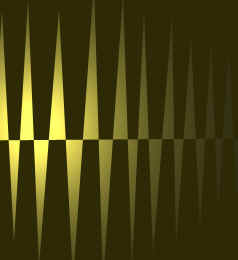|
Manufacturing Processes
Sisal Matting
Fibre is
extracted from the sisal plant which grows in tropical Africa, Central and
South America and China. The fibre is twisted into yarn and woven into
matting, using automatic power looms.
Matting
is woven in 4 m width and 30 m lengths and is either used as wall to wall
floor covering or cut and made into rugs with special borders. Custom
made matting can be woven in colours of choice when economic quantities
are
ordered.
Our
sisal matting is woven
in China and South America and is available
ex stock in The Netherlands in a
variety of designs and colours.
Seagrass
Seagrass is
grown in Asia, mostly in China in marshy fields and needs a touch of sea
water in its cycle of crop. Seagrass
is harvested by hand and spun into yarn by simple manually operated
machines. The yarn is woven into matting using power looms.
Matting
can be used as wall to wall floor coverings or made into rugs with
attractive borders, giving a natural feel to your holiday homes, dining or
living rooms.
Our
seagrass matting is available
in a variety of designs.
Coir
Matting
The
coconut fibre extracted from the husk of the coconut is twisted into yarn.
The yarn is then woven into matting using automatic and semi-automatic
power looms.
The
most common designs in coir matting are:
Basket
weave (commonly
called "Panama"),
Boucle
(with a loop) and Herringbone.
All
our coir matting designs are available in natural or bleached colours.
Coir
Fibre
Coir
fibre (Coconut fibre) is extracted from the outer skin of the
coconut by using the traditional method of soaking
the husks for a period of time ranging
from three to six months or more. The soaked husk is fed into a mechanical
drum with spikes in order to separate the small and weaker fibres (called
the "mattress fibre" and "omat" fibre) and the long
strands (called the "bristle fibre"). Mattress fibre is packed
and shipped out in bales
and in twisted
rope form. Bristle fibre is
well cleaned and is cut to various lengths and is used as a filler for brushes.
Bristle fibre is made into several
by-products such as coir yarn, coir twine, geo textile, etc
.
Coir
Twine
Coir
twine is
made
out of the long strands of bristle fibre.
The fibre
is twisted around a lead cotting
thread producing
the twine. Coir
twine
is used for agricultural purposes,
specially
in training the hops. In the recent past the twine has become a raw
material for woven matting etc.
Coir
Yarn
Coir
yarn twisted from the decorticate fibre(unseparated fibre from coconut
husk into mattress, omat and bristle) traditionally spun with hand as a
cottage industry and now by using semi-mechanical device is the raw
material for coir matting, PVC backed coir, Powerloom brush mats etc. and
is in great demand by the industries all over the world.
Coir
Dust
The
adhering pith to the fibre strands accumulates into huge mountains of
dust. In the recent past this has found to be a substitute for peat as a
growing medium. Growers have found dust to be ideal for growing tomatoes
and strawberries in particular.
Coir dust - also known as as the cocopith - is shipped out from
Sri Lanka and India in small briquettes, bales and bag form for different
uses.
|
